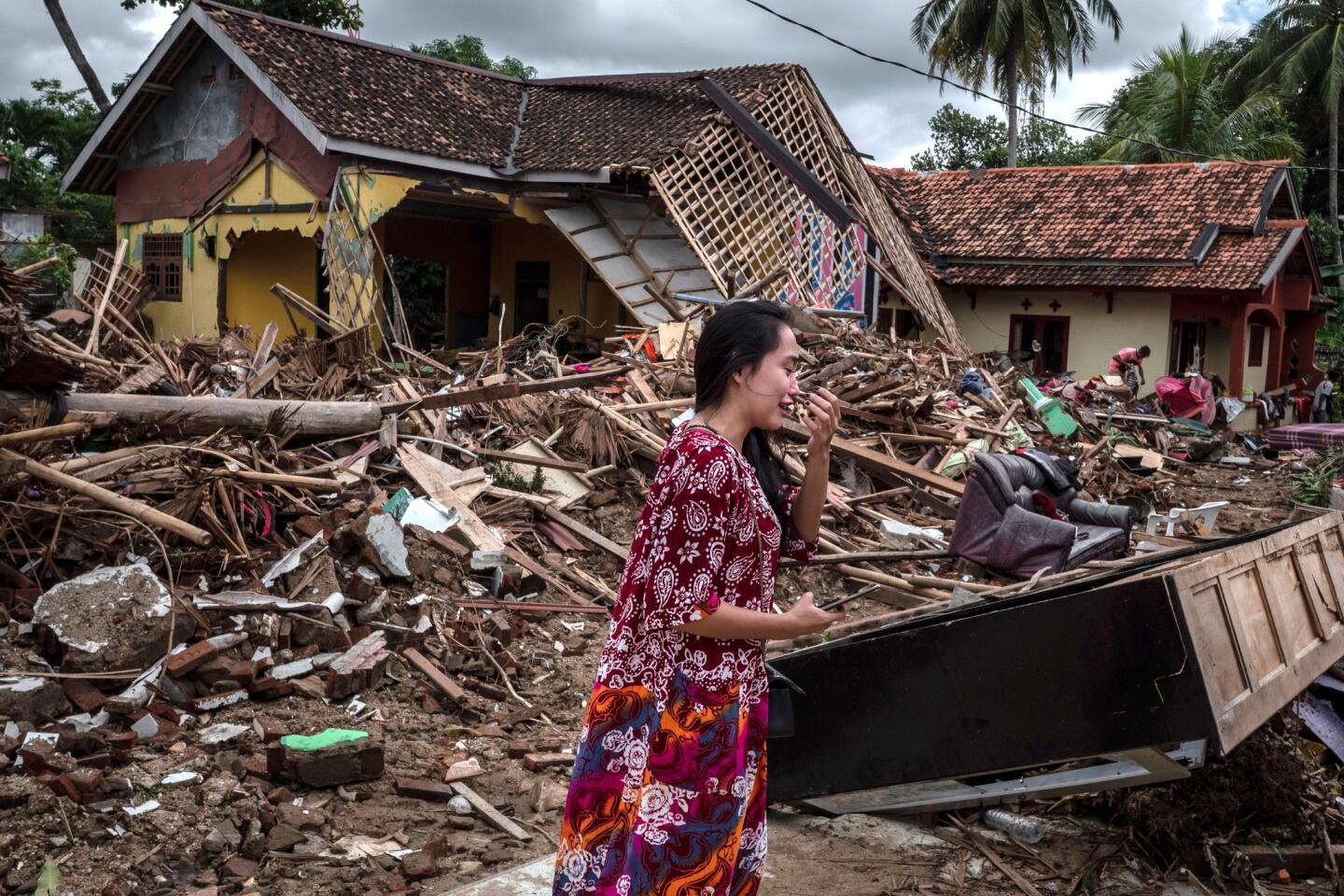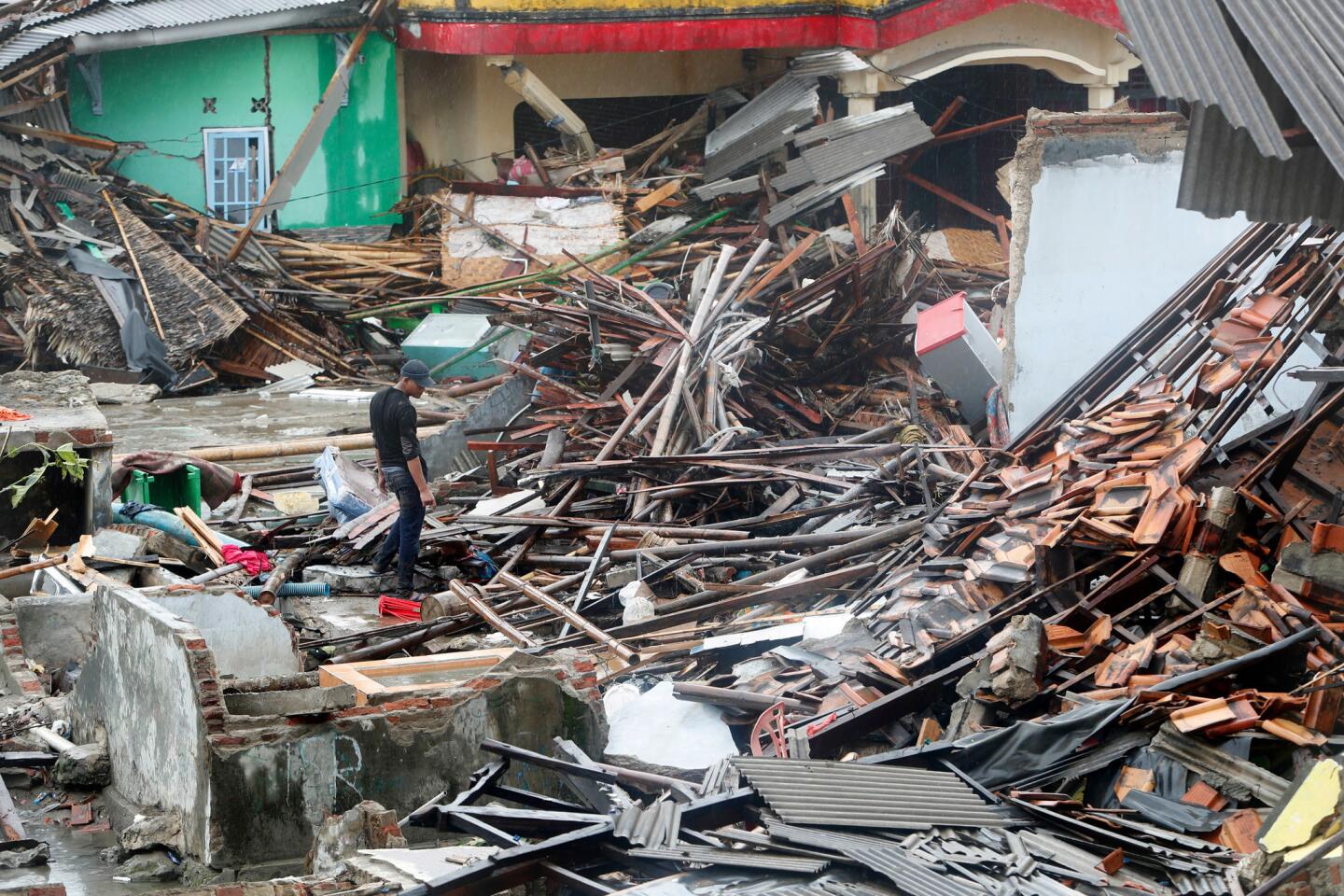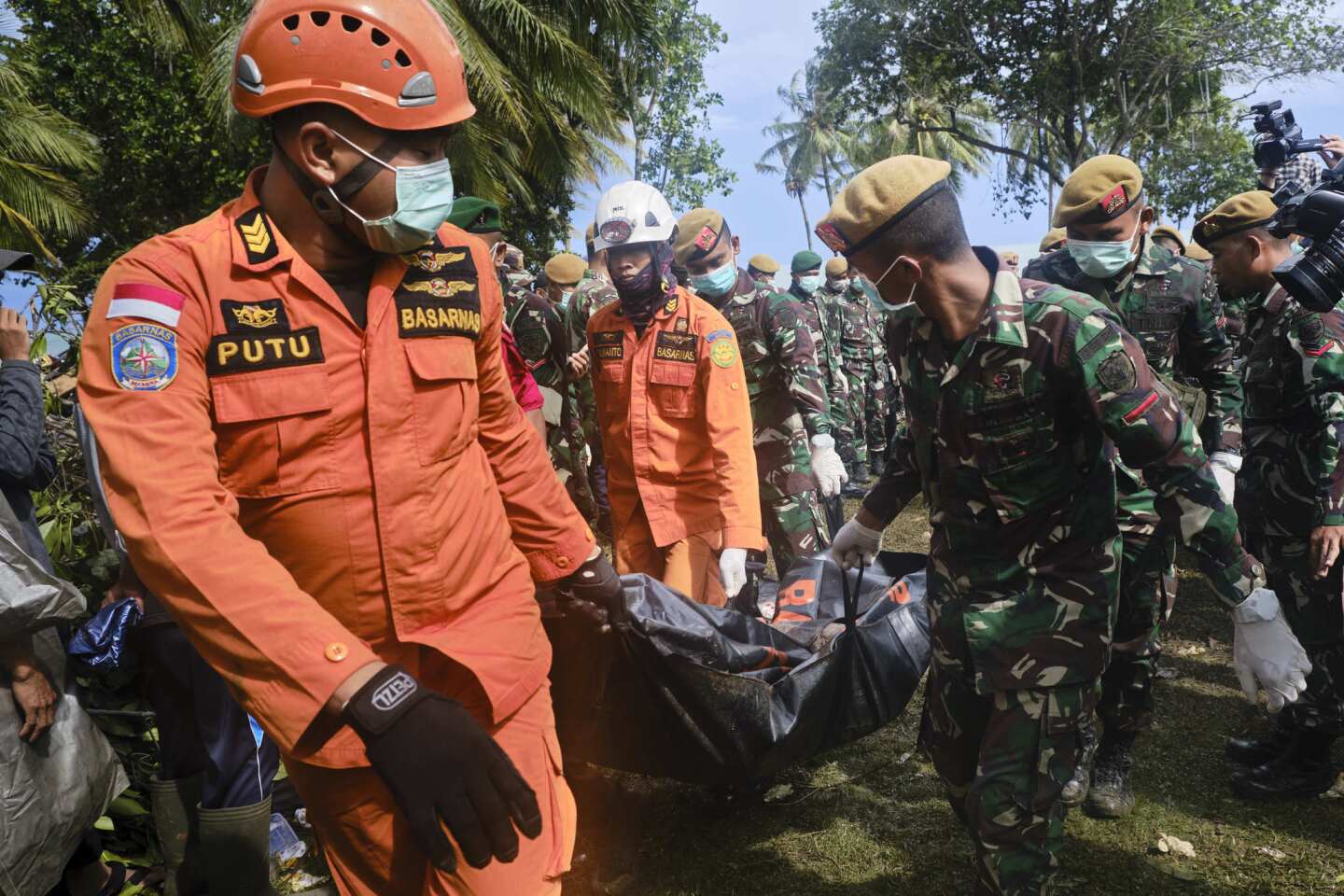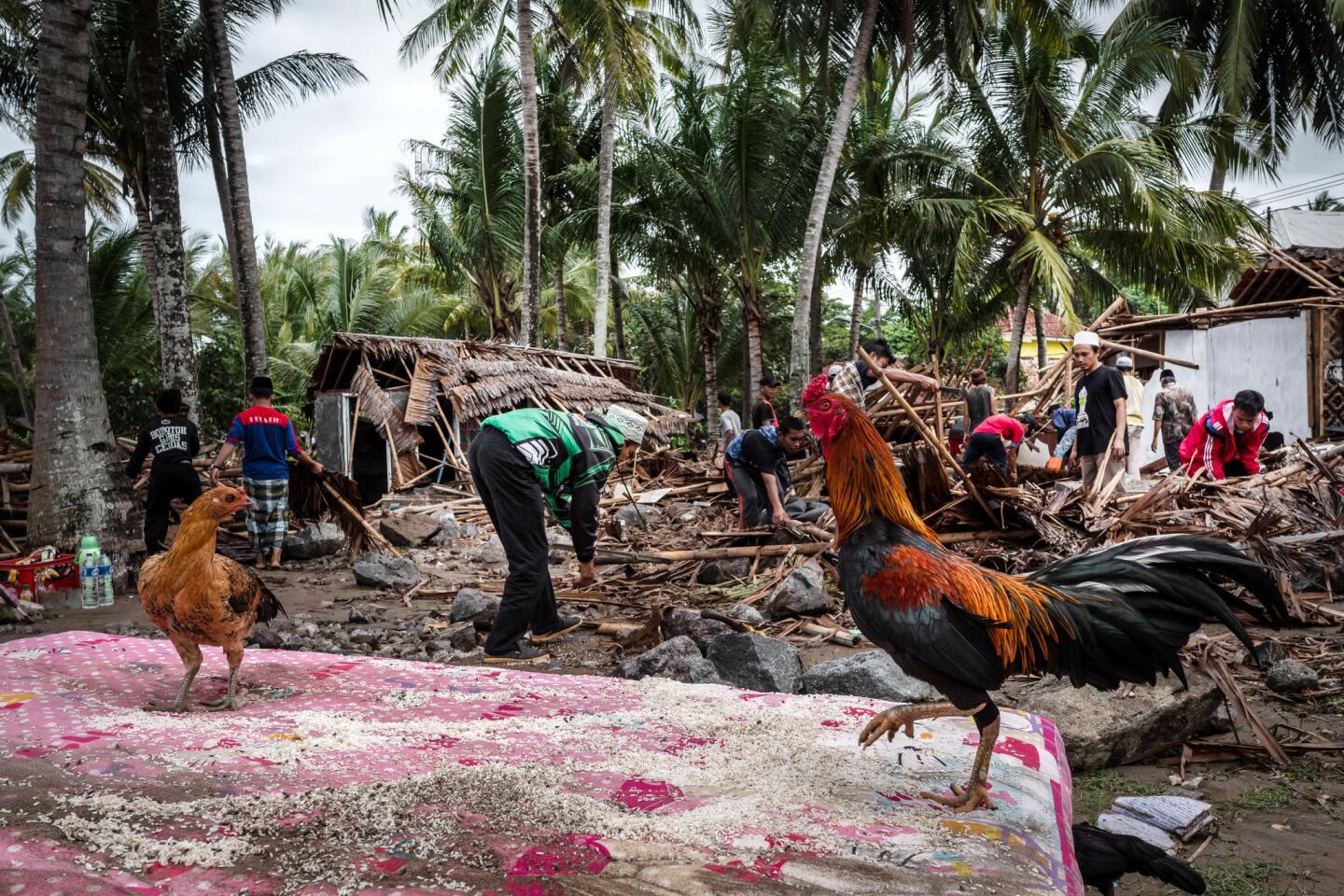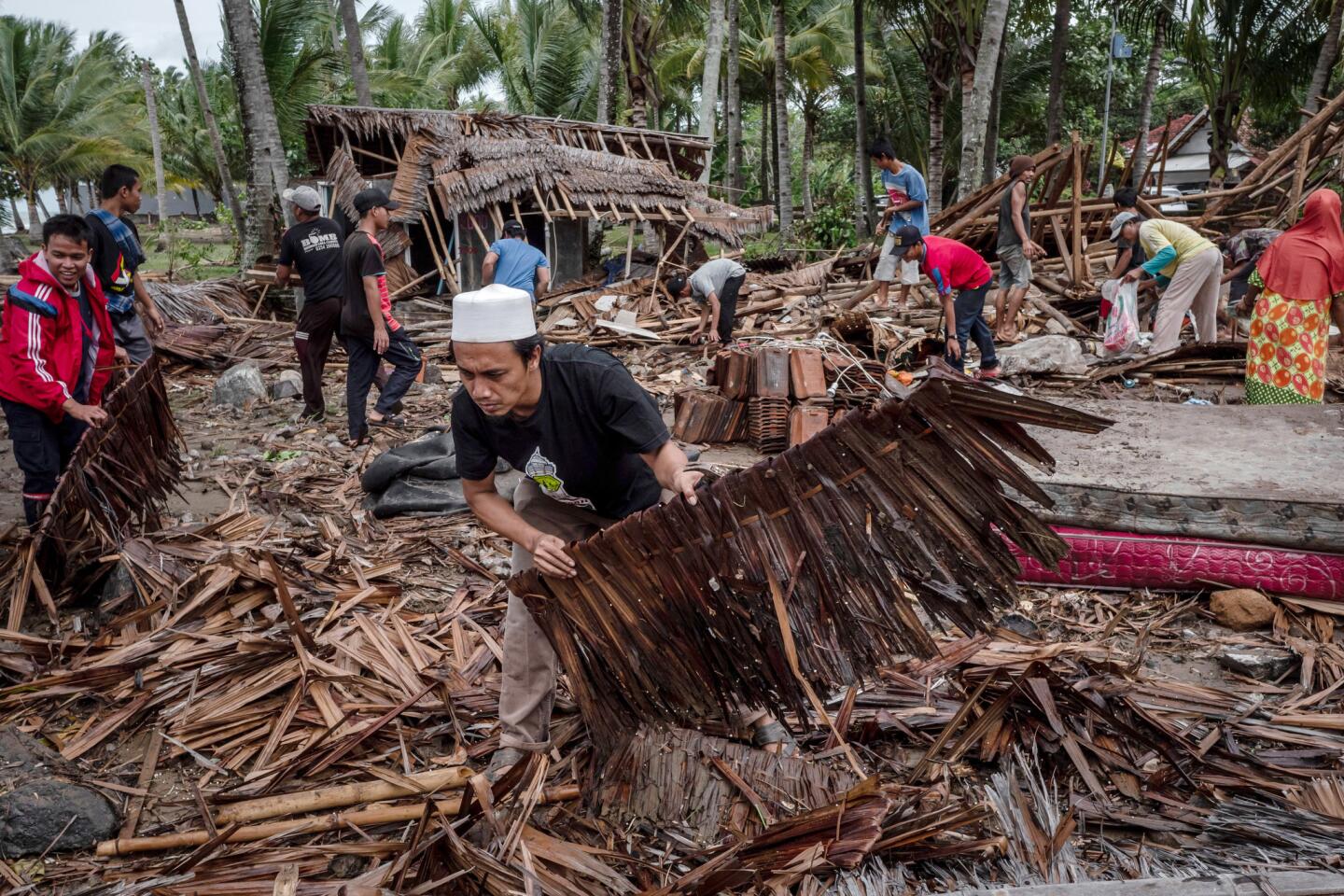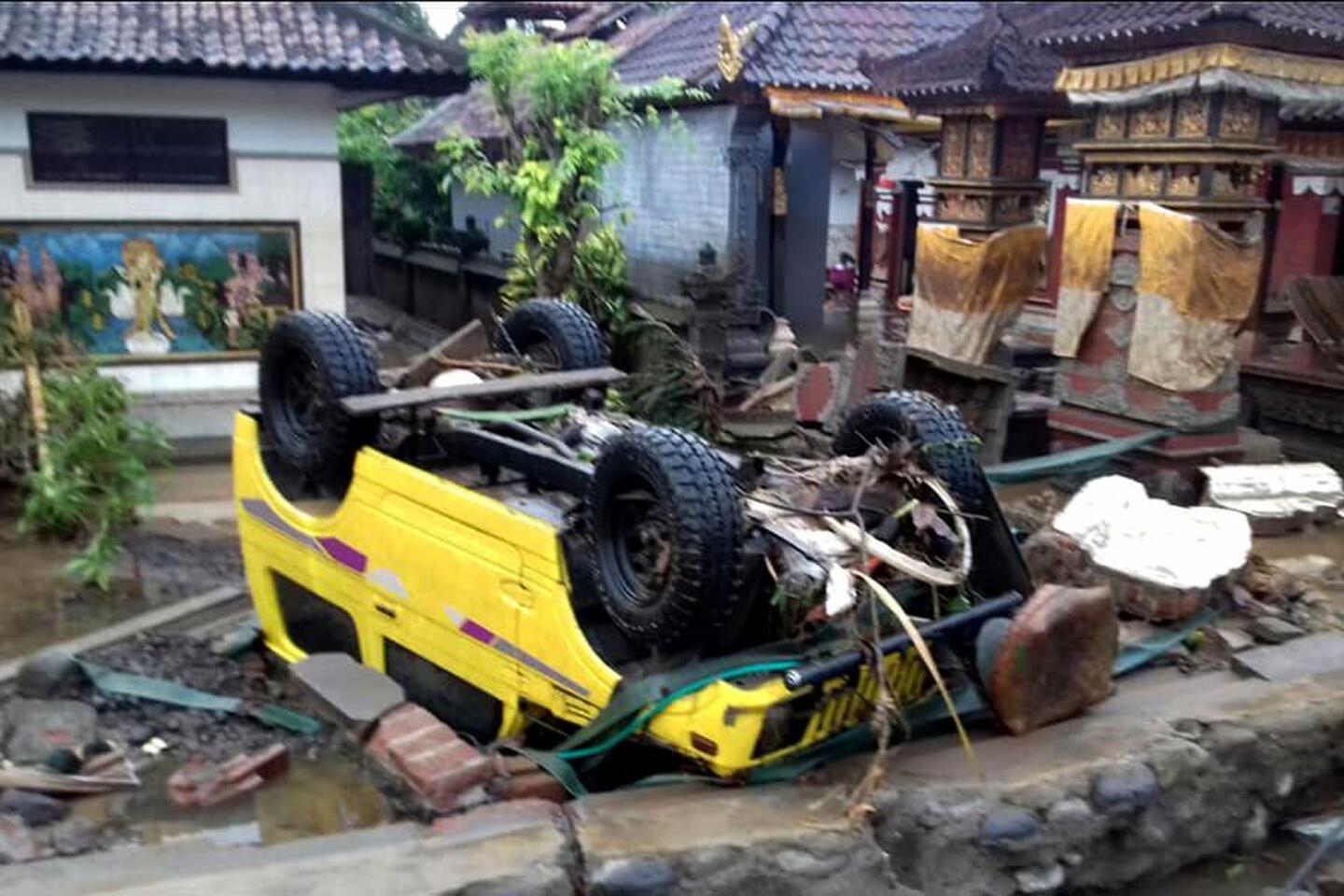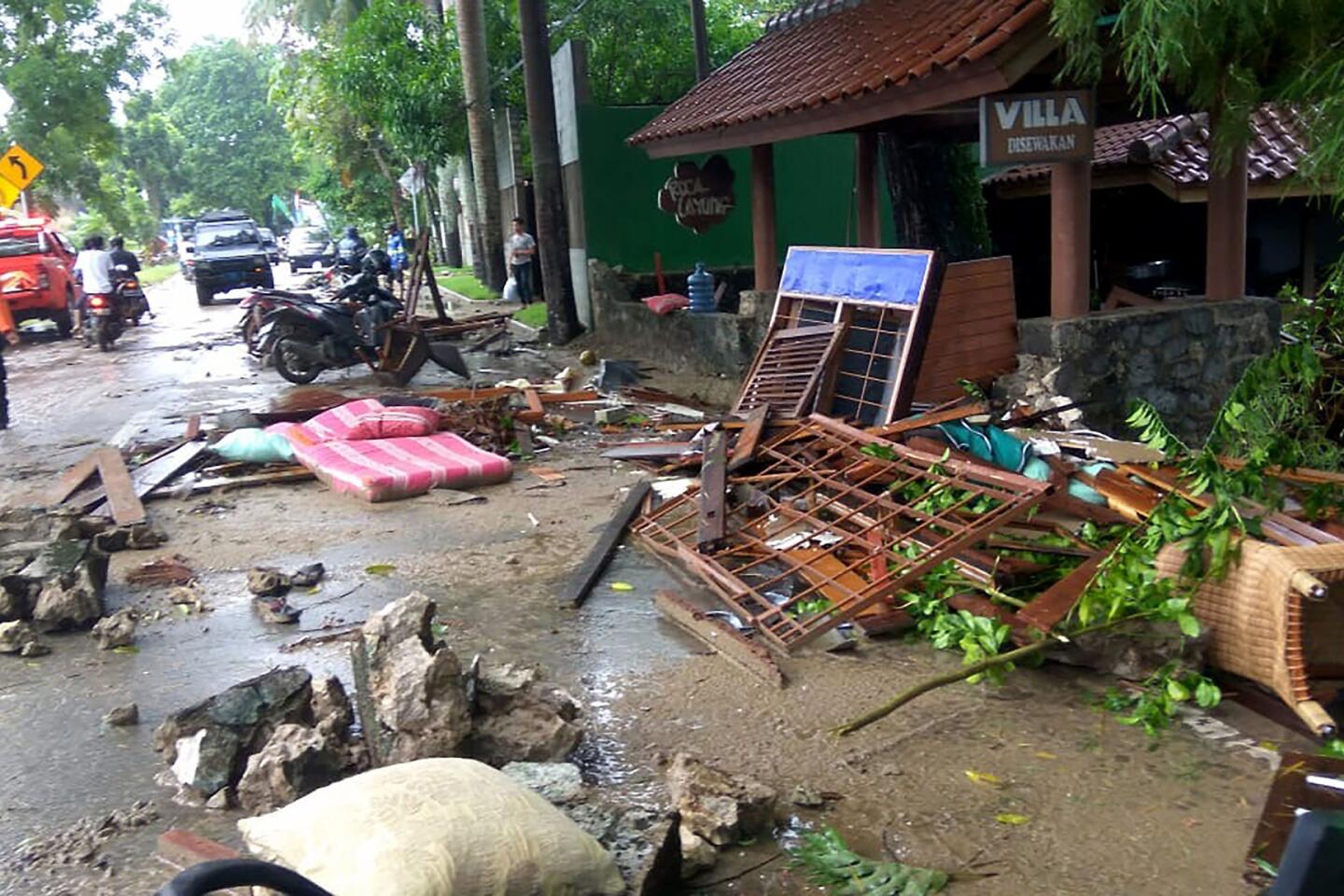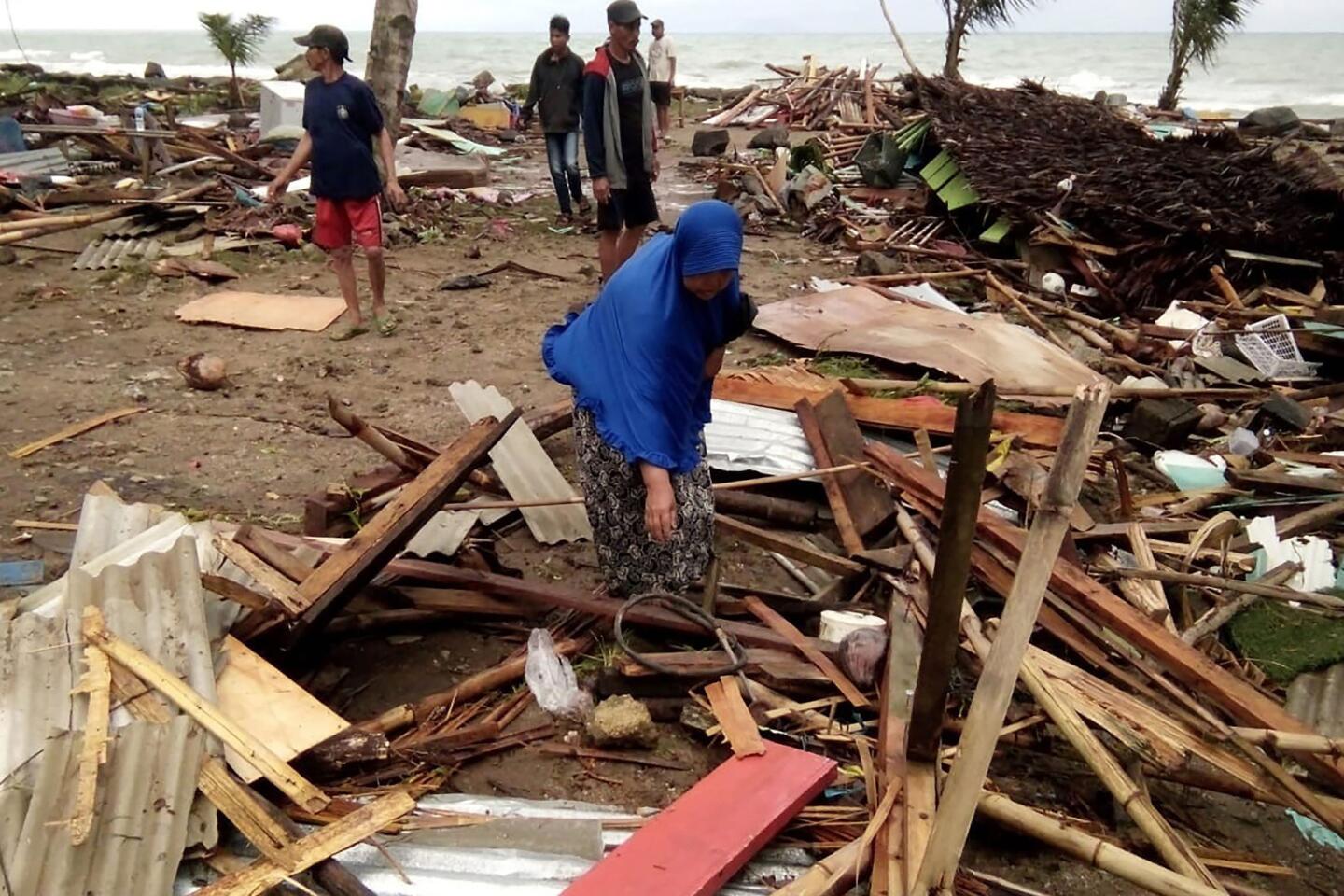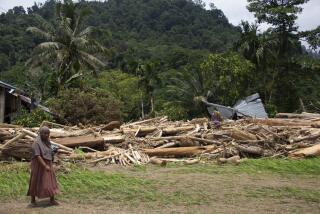Reporting from JAKARTA, Indonesia — Radar data from satellites, converted into images, show Indonesia’s Anak Krakatau island volcano is dramatically smaller after a weekend eruption that triggered a deadly tsunami.
Satellite photos aren’t available because of cloud cover, but radar images from a Japan Aerospace Exploration Agency satellite taken before and after the eruption show the volcano’s southwestern flank has disappeared.
Dave Petley, head of research and innovation at Sheffield University, who analyzed similar images from a European Space Agency satellite, said they support the theory that a landslide, most of it undersea, caused the tsunami that killed at least 430 people on Saturday evening.
“The challenge now is to interpret what might be happening on the volcano, and what might happen next,” he wrote in a blog.
Indonesian authorities are warning people to stay a kilometer (less than a mile) away from the Sunda Strait coastline because of the risk of another tsunami.
JAXA’s post-eruption image shows concentric waves radiating from the island, which experts say is caused by ongoing eruptions.
Anak Krakatau, which means child of Krakatau, is the offspring of the infamous Krakatau volcano that affected global climate with a massive eruption in 1883.
Anak Krakatau first rose above sea level in 1929, according to Indonesia’s volcanology agency, and has been increasing its land mass since then.
1/15
A distraught woman looks for her belongings at a house destroyed by the tsunami in Indonesia.
(Ulet Ifansasti / Getty Images) 2/15
Aerial view shows the Anak Krakatau volcano erupting in the Sunda Strait off the coast of southern Sumatra and the western tip of Java.
(Nurul Hidayat / AFP/Getty Images) 3/15
Residents walk among debris after the tsunami hit in Sumur, a city in the Banten region of West Java, Indonesia.
(ADI WEDA/EPA-EFE/REX / ADI WEDA/EPA-EFE/REX) 4/15
A man reacts after identifying a relative among the bodies of tsunami victims in Carita, Indonesia.
(Fauzy Chaniago / Associated Press) 5/15
Rescue workers recover the body of a victim of the tsunami during a search at a resort hotel in Tanjung Lesung, Indonesia.
(Ed Wray / Getty Images) 6/15
Villagers search through debris at their destroyed houses after being hit by the tsunami in Carita, Indonesia.
(Ulet Ifansasti / Getty Images) 7/15
A man walks through debris, carrying his belongings, after the tsunami hit Carita, Indonesia.
(Ulet Ifansasti / Getty Images) 8/15
Residents walk through debris in Sumur, Indonesia, on the island of West Java.
(Adi Weda / EPA-EFE/REX) 9/15
Villagers search through the debris of what used to be their homes after the tsunami hit Carita, Indonesia.
(Ulet Ifansasti / Getty Images) 10/15
People inspect the damage at a tsunami-ravaged village in Sumur, Indonesia.
(Fauzy Chaniago / Associated Press) 11/15
Relatives mourn Sunday at a health facility where the bodies of tsunami victims are collected in Pandeglang, Banten, Indonesia.
(Adi Weda / EPA-EFE/REX ) 12/15
Victims recovered along Carita beach are placed in body bags.
(Semi / AFP/Getty Images) 13/15
A photo made available by Indonesian officials shows a car that was rolled over when the tsunami hit Sunda Strait.
(Handout / EPA-EFE/REX ) 14/15
Debris from damaged buildings litters a street near Indonesia’s Carita beach after the tsunami hit.
(Ronald / AFP/Getty Images) 15/15
Indonesians inspect the damage to their homes on Carita beach after the tsunami hit.
(Semi / AFP/Getty Images) 
